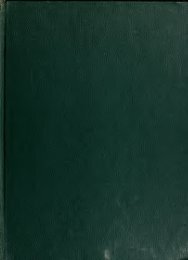PDF_2.1_mb. - Oregon Websites & Watersheds Project, Inc.
PDF_2.1_mb. - Oregon Websites & Watersheds Project, Inc.
PDF_2.1_mb. - Oregon Websites & Watersheds Project, Inc.
You also want an ePaper? Increase the reach of your titles
YUMPU automatically turns print PDFs into web optimized ePapers that Google loves.
The 1855-1856 <strong>Oregon</strong> Indian War in Coos County, <strong>Oregon</strong>:<br />
Eyewitnesses and Storytellers, March 27, 1855 – August 21, 1856<br />
This is the documented, and nearly forgotten, story of the systematic “ethnic cleansing” of the Coos,<br />
Coquille, Chetco, Umpqua, and Rogue River watersheds of southwest <strong>Oregon</strong> during the 10-month<br />
period from October 1855 through July 1856.<br />
Coos County had been created in Dece<strong>mb</strong>er 1853, and Curry County was subsequently subdivided from<br />
Coos County in Dece<strong>mb</strong>er 1855, during time described in this report. In August 1857, the <strong>Oregon</strong> State<br />
Constitution was written by representatives from the Territorial counties in existence at that time. In<br />
February 1859, <strong>Oregon</strong> became a State, and in April 1861, the first battle of the Civil War took place.<br />
These are not unrelated events, but they are rarely acknowledged and are poorly understood as a result.<br />
This report is an effort to provide a better understanding of the people and circumstances that were<br />
involved in the <strong>Oregon</strong> (or “Rogue River”) Indian War of 1855-1856, and to place them in better context<br />
to subsequent State and national histories.<br />
This story is entirely told through the eyewitness accounts of more than three dozen participants and<br />
observers, and through the subsequent writings of three early historians; each of whom was alive at that<br />
time, personally interviewed many of the key people and local residents that were involved, and<br />
subsequently wrote books on these topics that remain standard references -- although nearly unknown – to<br />
the present time.<br />
These people are listed and briefly described in the pages following the Table of Contents and, by design,<br />
are largely focused on the perspectives of people and events centered at Fort Orford and in the Coos Bay<br />
and Coquille River basins. The listed “Speakers” are those individuals directly quoted in the text; whether<br />
from their own writings as diarists, journalists, and correspondents, or as credibly quoted by others.<br />
Speakers, with the exception of two children (one Indian), two women (white), and Tyee John, are all<br />
healthy, mostly literate, white men, mostly young and in their 20’s and 30’s: miners, soldiers, land<br />
claimants, and businessmen.<br />
The story begins with the opening of regular postal service at Port Orford, connecting the region for the<br />
first time to the current events in San Francisco, Portland, and Fort Vancouver, and by mail and steamship<br />
transport to the rest of the world. Local people were no longer completely isolated, but were now privy to<br />
the latest news, popular songs, and gossip shared by the rest of the world. And, conversely, the rest of the<br />
world was now informed as to what was taking place in Coos County.<br />
For reasons of narrative, credibility, and respect, I have attempted to let each character speak for<br />
themselves and to let us know what they are seeing and thinking at that time; my contribution has been to<br />
seek these people out, and then only let them speak in turn and one at a time. Readers who stu<strong>mb</strong>le over<br />
references to “didappers” and “Fayaway,” as I did, can now Google those terms in a few moments: an<br />
unprecedented luxury unavailable to past scholars. As a result of these considerations, I have kept<br />
parenthetical asides, footnotes, and personal text to an absolute minimum – no need for me to distract<br />
readers from the words and thoughts of the actual participants and observers of these affairs. They want to<br />
tell their own story, and it’s a good one.<br />
Bob Zybach<br />
Cottage Grove, <strong>Oregon</strong><br />
May 15, 2012<br />
Cover illustration is from Glisan (1874: 293) and depicts “Volunteers on the march.”



